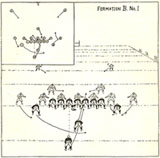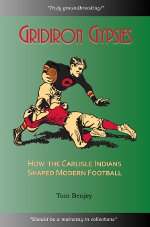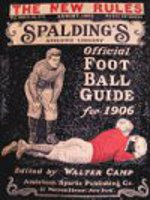Although The Boston Globe’s Assistant Managing Editor and Sports Editor responded to my request that they correct the numerous errors and half truths in their 12/29/13 article: http://www.bostonglobe.com/sports/2013/12/29/redskins-wonder-what-name-the-answer-traces-back-boston/GmfYbPTnHx1Ht5NgqN1EOM/story.html with “None of your points warrant a correction. It’s time to move on,” the story isn’t over.
The son of one of Lone Star Dietz’s Albright College players sent me the print version of the article which was printed in the Sports Section, not on the opinion pages where it belonged. That The Globe considered this to be a major article is evidenced by the fact that, including a large color photo, it covered over three-quarters of the front page of the Sports Section and the entirety of page C11. This was not just a minor throwaway piece. It was written for a purpose: to further The Globe’s agenda.
Last Saturday, January 4, The Globe ran an editorial that evidences two major points: 1) Attacking the Redskins is a major Globe agenda item, and 2) editorial staff must have read my (or some other researcher’s comments, if someone else responded to them) and sidestepped most of the reasons previously given for changing the team’s name: http://www.bostonglobe.com/opinion/editorials/2014/01/11/redskins-born-boston-retired/9DPJSUM1k87LYqFS2y9HCJ/story.html
Saturday’s editorial refers to the December 29 Globe article but does not attempt to correct to its many errors but attacks from a different direction. Perhaps The Globe’s editorial staff finally realized their recent article had been exposed as nothing more than a hit piece for which William Randolph Hearst would have been proud. What’s new is that The Globe now states, “Unlike ‘Braves’ or ‘Chiefs’ or ‘Indians,’ the term ‘Redskins’ refers to skin color.”
So, Redskins is now unacceptable because it’s based on skin color, even if Illini created the term. However, The Globe did not demand the Congressional Black Caucus, state of Oklahoma (Choctaw for Land of the Red Man), New Black Panther Party, The National Black Justice Coalition, Associated Black Charities, Association of Black <pick a profession>, National Association for the Advancement of Colored People, or the United Negro College Fund to change their names and those names are all based on skin color. The Globe grasps for any justification to support its agenda.














